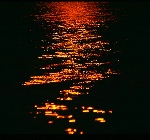Preparing your images for the Web
Many people now own digital cameras, even cell phones produce pictures with an acceptable quality and some old-fashioned photographers (like me) still shoot photos on film but put them in a scanner afterwards.
So, it is easier to share photos than ever before. You can just send them to others by mail, upload them to a web gallery or even put them on a photo site of your own.
However, the web is a very special medium and there are a few things that you should consider before doing so.
Here are some quick tips on how to prepare your photos best for the web.
These are just the most important aspects - if you want to go further into this matter, there are many in-depth tutorials for the major software packages. on the web (entering the name of your software and “tutorial” will usually bring up a lot of references in your favourite search engine).
Quick tips:
- Whatever you do, always use a copy of the original file, not the original!
- When you have finished optimising your photo, save one copy in a loss-free format (eg “tif”) and the one you actually want to use on the web as “jpg”
- Do not save a “jpg” file repeatedly
- Sharpen your image only shortly before saving it.
- Graphics other than photos are usually better saved as “gif” files.
- Cut down on image size:
- crop your image to the part you need
- only use the quality you actually need on a monitor
- make sure that the photo fits on screen without scrolling - Calibrate your monitor
- It is more important to know your software well than to buy the most expensive one. You can get good results even with free software
- If you scan images, always start with the source negative or slide, - not a print
Prepare your photos for the web
Image Size, file size and web optimisation
Image Optimisation: Hardware Requirements
Photo Editing Software
How to correct / retouch a photo

